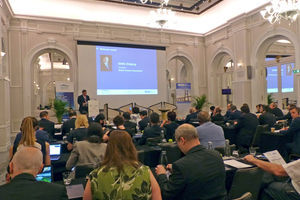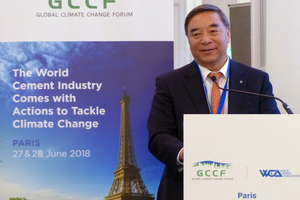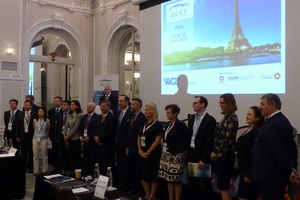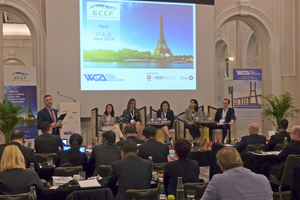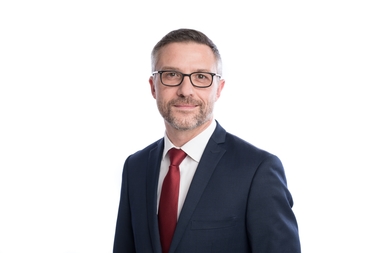WCA urges industry to focus on innovation in fight against Climate Change
The World Cement Association (WCA) is urging the global cement industry to increase efforts to adopt new technologies faster and put greater focus on innovation in order to make crucial progress on reducing CO2 emissions. This is the key message from the WCA Global Climate Change Forum in Paris, hosted on 28.06.2018, where WCA President Zhi Ping Song told members: “No more words, but actions are needed”.
More than 50 participants discussed the research results and information presented by the experts. The first part dealt with the question: “How can the global cement sector contribute to a carbon-neutral built environment?”
Cecilia Tam, The International Energy Agency, introduced the ”Low carbon technology roadmap for the global cement sector“. She pointed out strategies to reduce CO2 emissions in cement production. This includes thermal energy efficiency, fuel switching and reduction of the clinker to cement ratio.
Marco Kisic, CDP Investor Research, showed the risks and opportunities for the cement sector. The 13 companies in his sample on average reduced their emissions intensity by 1 % p.a. in 2012/2016 – this needs to more than double to meet a 2-degree target. Indian companies performed best in the point clinker ratio and energy efficiency. Limited incentives for the industry regarding decarbonize regulation is the key.
Alzbeta Klein, International Finance Corporation, informed about the construction materials and their role in infrastructure building. She explained that 60-70 % of Asia is yet to be built. In 60 years there are 302 cement projects in 77 countries for US$ 7.1 billion. WCA plays an important role in facilitating knowledge and raising awareness. She encouraged the industry: “Creating markets for green buildings and climate business”.
Terri Wills, World Green Building Council, set up the thesis: “Cement could become the new oil”. From 2019, California will establish maximum carbon emission levels for “eligible building materials” in procurement: carbon steel bars, flat glass, mineral wool insulation and structural steel. Cement will be next.
In a panel discussion, the speakers answered the questions from the auditorium. Topics were, amongst other things: the certificate prices, the use of renewable energies and new cement materials.
In the second part, the topic “Views and actions of the global cement sector: Innovation at every level!” was the focus.
Dr Tongbo Sui, Sinoma International Engineering Co. Ltd., reported about “Progressing towards a sustainable China cement industry.” Tongo presented some KPI targets for the 13th five year planning period and he compared 2015 with 2020. The elimination of clinker overcapacity should be 20 % in 2020. The number of smart factories should increase to more than 100, the reduction of main pollutants (PM, NOx, SOx) should be more than 30 % and the increase in waste utilization 10 %.
The topic of LC3 was discussed by Dr Karen Scrivener, EPFL University of Lausanne, and Anne Dekeukelaere, Cementis GmbH. Anne Dekeukelaere presented three scenarios for producing LC3 in a cement plant, in a grinding plant and in a greenfield grinding unit. Producing LC3 versus CEM I is attractive in the case of an existing integrated or grinding plant even if the clay is located as far as 200 km from the plant. The distance of the clay to the production facility is the key driver.
Paul Keurich, Urbasolar, reported that the global solar PV capacity is around 402 GW (+98 GW compared to 2016). He presented the cement plant Sococim, one of the largest cement factories in West Africa with a cement production of 3.5 million t/a. This works with a solar power plant and has a total PV area of 41 098 m². This hybrid system is connected with the thermal plant. There is a supervision and monitoring system and an integrating tracking system. The avoided emissions are 10 000 teq CO2/a.
At the end of the lecture program Daniel Gauthier, SPIRE, talked about ”The European research and innovation public private partnership and its contribution to a “well-below 2 degrees” and circular future”. He gave examples of projects in the cement industry: industrial symbiosis between sectors, CO2/CO from the cement industry as feedstock for chemicals and alternative fuels, new digital tools to boost recycling of demolition waste, electrification of all process industry sectors and new comminution technologies in the process industries.
“The Global Climate Change Forum made clear the importance of stimulating innovation if we are to have any hope of achieving the Paris climate goals,” said Bernard Mathieu, Director of the WCA Climate Change Program. “What has been very positive is to see the enthusiasm among our members for sharing knowledge and best practice, and we will continue to focus on being a platform for change, delivering strong and direct action against the climate challenges of today and tomorrow.” With a membership base representing more than 1 billion tons of annual cement production capacity, the WCA and its members have the capacity to have a positive effect.
Based on the results of the conference, the WCA will develop a Climate Change Action Plan, which will be published in September. The focus will be on clear and tangible actions for transition towards low-carbon production and will also identify successful approaches to contribute to a carbon-neutral built environment. The plan will focus on five priorities: Transparency, waste co-processing, material efficiency, innovative technologies, new business opportunities and business models.
“Since inception, the World Cement Association has championed greater collaboration and higher standards across the sector globally,” said Emir Adiguzel, Chairman of the World Cement Association. “There are few areas where this is more important than tackling climate change, and we are proud to be stepping forward to lead our industry towards a more sustainable future.”
//www.worldcementassociation.org" target="_blank" >www.worldcementassociation.org:www.worldcementassociation.org

